Spotted the rather controversial parakeets in London? No doubt you’ve seen them darting across London’s skies. A flash of bright green splitting through the air, quickly followed by another and another.
It used to be that the most exciting colour you’d see on a bird was the red plumage on an aggressive robin, but that was before a band of rose-ringed parakeets expanded their grip on London.
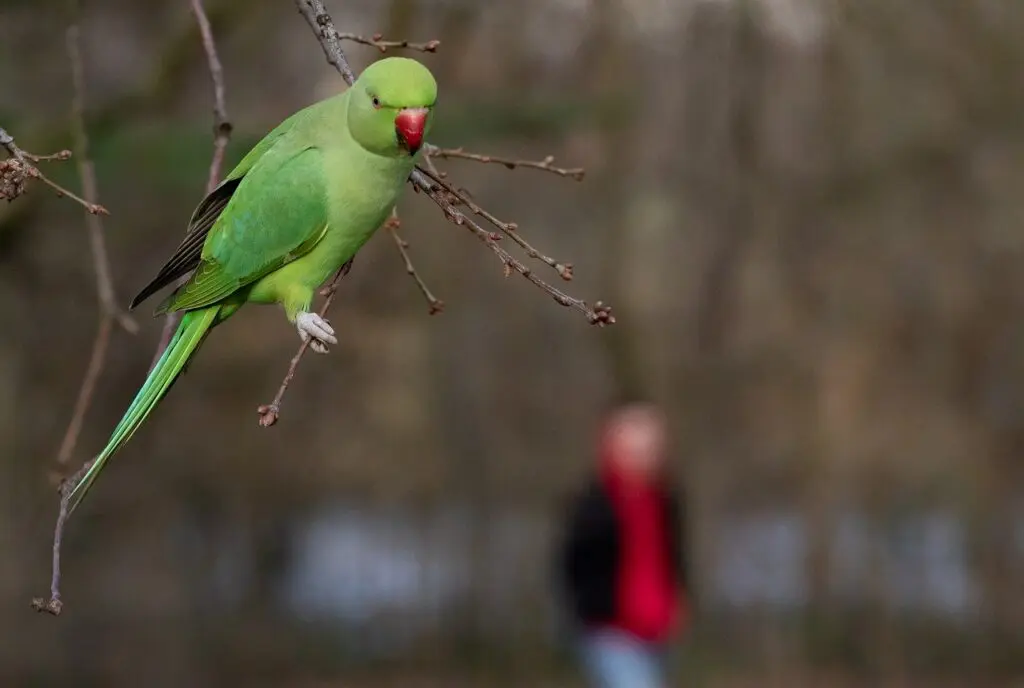
Rose-ringed parakeets (Psittacula Krameri) proliferate in London. In 2012 it was estimated there were around 32,000 of them – a number that would have risen significantly in subsequent years thanks to their rather voracious breeding habits.
But how did these feral parakeets – native to Africa and the Indian Subcontinent – come to rule London’s skies?
Turns out the answer isn’t as easy to find as you might think… but the road to discovery is quite a ride, careering through rumours of bust-ups between pop stars, massive storms and burgled houses.
Why are There Parakeets in London?
Ask ten city-dwellers about how the green parakeets came to London and we’ll wager you get ten different stories (well, more likely five different stories and a few blank stares).
They range from the near-believable to the downright bizarre – proof if ever you needed it that Londoners can spin a good yarn from even the simplest of events.
Jimi Hendrix
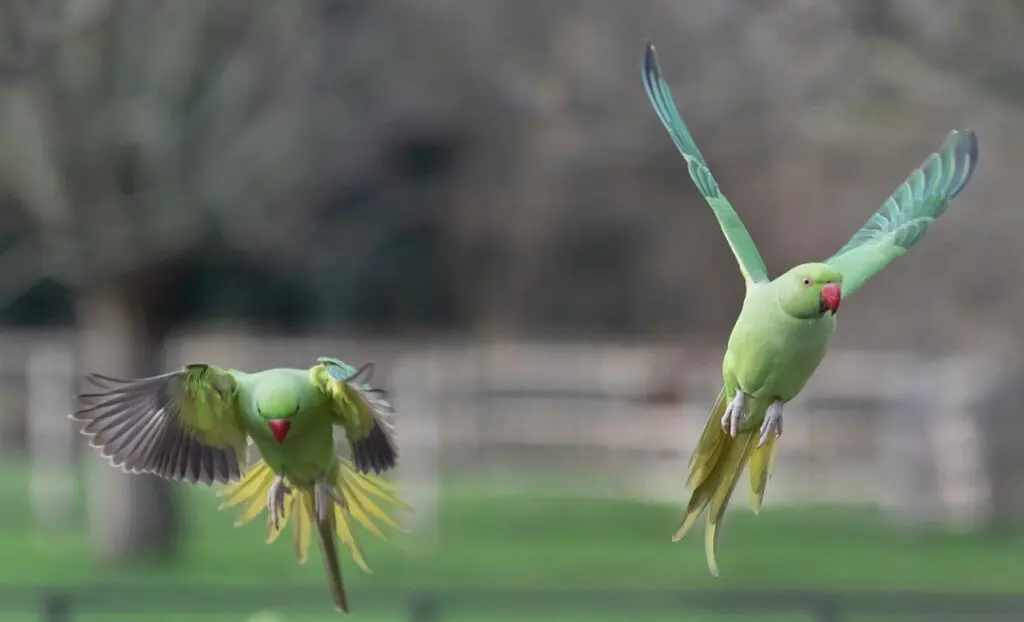
In 1968, Jimi Hendrix, giddy with the high of having released his final studio album, Electric Ladyland, strolled into the streets of Mayfair.
He bore a birdcage in his hands, paying little attention to the traffic that blared down the streets, the suits that passed him on the pavement. Rather surprisingly, given that he was one of the biggest rock stars of the decade, he too was ignored.
Instead, as Hendrix reached Carnaby Street, his eyes remained fixed on the birdcage, more specifically its two inhabitants – a pair of rose-ringed parakeets named Quant and Halston. The moment arrived and he stopped dead, opening the door of the cage and setting the two birds free.
Over time, two became four, four became eight and the wild parrots spread across London.
The Great Storm of 1987
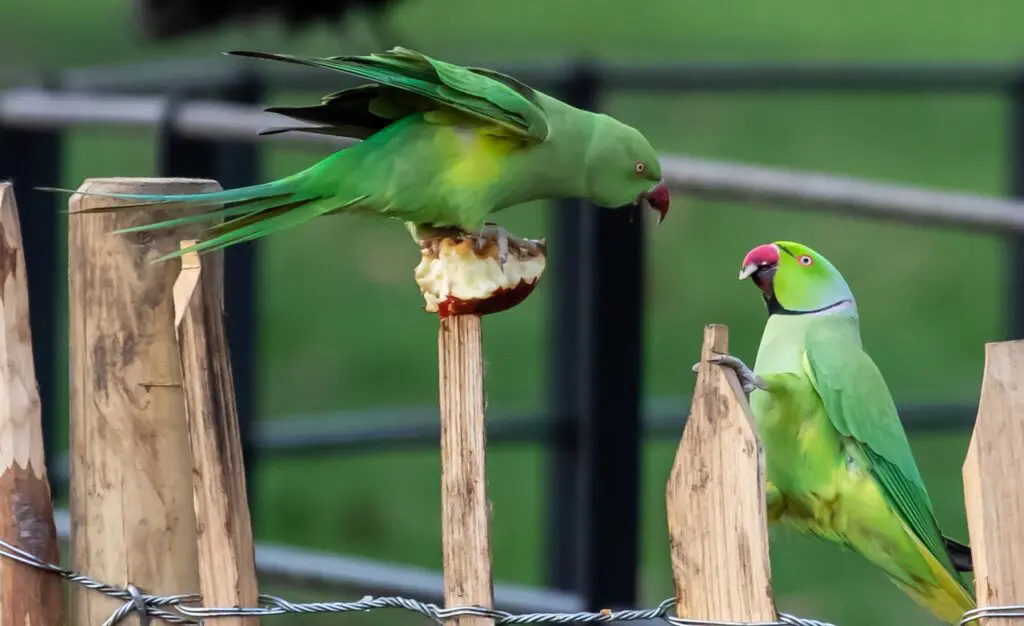
Wait, wait, that doesn’t sound right. Everyone knows that the first wild parakeets were spied in London much later than that. Remember the Great Storm of 1987 when a hurricane ripped through the British Isles?
The storm blew through a house near Esher, caving in its windows and emptying the contents of the front room all over the lawn and into the road.
Amidst all the confusion it took a couple of days before the family realised their prized pair of breeding parakeets had escaped. Once, the youngest thought he spied one of them in the local park – it wasn’t long before the local paper started reporting sightings of a small flock of parakeets.
The African Queen
No, both of those are wrong. The real history lies in the filming of The African Queen in 1951. The film’s stars, Humphrey Bogart and Katharine Hepburn were filming at Isleworth Studios.
The director, John Huston wanted the film to look as realistic as possible so he ordered for a flock of parakeets to be brought on set, ready for their appearance on the silver screen.
The wily birds, bored of waiting for their moment to shine took umbrage at what they saw as a failure to respect their precious time, escaped into the wilds, stealthily growing in number since.
George Michael vs Boy George
Others say it was a burglary of George Michael’s home that did it – those that say it was a bust-up between Michael and Boy George disagree, but only on the means of escape – they’re also convinced the tale of London’s parakeets lies at Michael’s door.
Yet more tell you equally lurid theories – their earnest faces and dead serious eyes almost convincing you they’re speaking the truth.
Parrot Fever
In recent years scientists working to discover how London came to have so many parakeets have come up with a very interesting theory…
During the previous century owning parrots was very popular, but not without its perceived risks. That risk? Parrot fever!
Scientifically known as Psittacosis, parrot fever can kill. Researchers believe that word of this spreading through the news caused people to release their birds on such a scale that the population was able to take root.
What’s more, they’ve gone on to try and prove this using techniques akin to forensic science. The scientists mapped 50 years of parakeet sightings in London using techniques that the police use to track the movement of a serial killer. Yes, genuinely.
Their research pointed them in the direction of a handful of locations including Syon Park, Worton Hall Studios, and (Jimi Hendrix did you really do this?) Carnaby Street.
They have also looked back through old news and traced the major releases of birds to two time periods, 1929-1931 and 1952 – the first of which actually coincides with an outbreak of
Psittacosis.
It’s still just a theory, but one that sounds pretty compelling to us.
Disproving the Myths
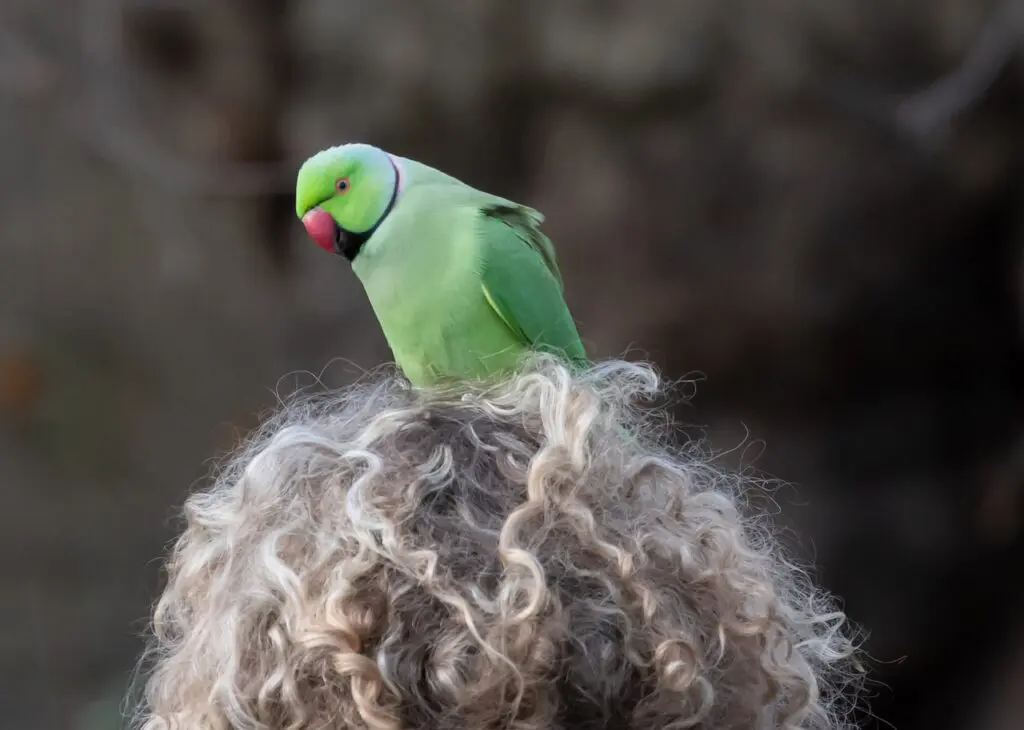
Ok, so how did parakeets come to London really? Unfortunately, the truth appears to be a lot more boring than any of these urban legends would have you believe.
Although scientists can’t pinpoint the date or location that birthed the flocks of green parrots with absolute certainty, they can tell you that they did not originate from a single place or a single time.
It makes sense when you think about it. Londoners’ affinity for keeping parakeets as pets stretches back hundreds of years. It was almost inevitable that some were going to escape into the wild.
First Sightings and an Ideal Habitat
Recorded sightings of wild parakeets in London date back to 1893 when a pair were reported in Dulwich. They grew in frequency, to the point that today no one would think to even report it – doing so would be akin to reporting seeing a pigeon on Trafalgar Square.
Part of their success can be ascribed to London’s abundance of green spaces (it falls within the UN definition of a forest after all). Used to the much colder climes of regions like the lower parts of the Himalayas, London, with its relatively warm and wet winters is no challenge.
A Little Science
We should also consider that the International Union for the Conservation of Nature states that any given species needs at least 50 healthy individuals to populate a new habitat.
They also say that for a population to cope with threats like disease, competition, predators etc. they need at least 500 healthy individuals.
Given that parakeets are so ubiquitous in London these days we can assume that even early on their numbers would have trumped the figures given by the IUCN.
That kind of puts an end to the theory that all this starts with Hendrix or George Michael then…
Where to Find Parakeets in London?
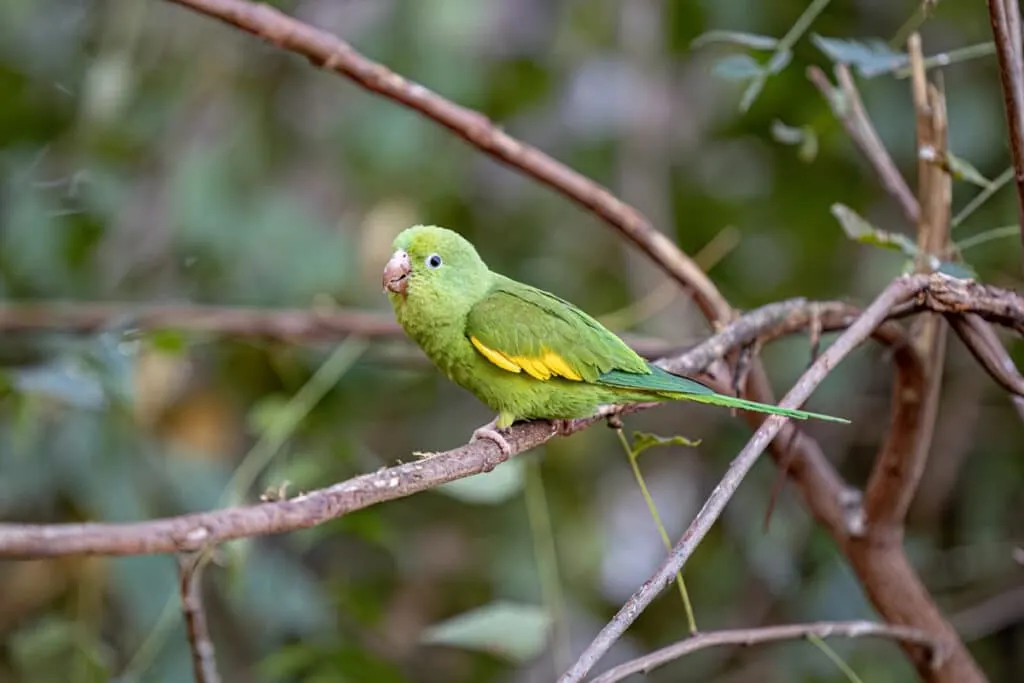
An easier question would probably be where not to find them.
Parakeets have spread far and wide across London, you’ll find large flocks in Mitcham Common, Kensington Gardens, Lewisham Crematorium, Esher Rugby Club, Battersea Park and pretty much everywhere in Kingston Upon Thames.
You can also see them regularly in any of London’s major parks. We always seem to catch a good look at a flock in Victoria Park.
The best place to get up close and personal with the Parakeets is in Kensington Gardens – they’re very used to human contact here.
If in doubt, follow the loud squawks.
Feeding The Parakeets
London’s parakeets feel so at home in the big city that many of them will eat right out of your hand. This can happen anywhere you’ll find the birds, but as we said, the ones in Kensington Gardens are particularly friendly.
If you want to feed the birds you’ll want to bring your own feed. Nuts and seeds are their favourite. Contrary to popular belief bread is actually not great for them so avoid picking bits off your sandwich – the birds will still eat it.
This next tip might sound obvious, but it’s worth mentioning: you’ll want to stay as still as you can. These lovely little creatures are still pretty flighty (no pun intended) and won’t come anywhere near you unless you clearly show you’re not a threat, and that you’ve got something to eat of course.
What You Need to Know…
Are Parakeets a Problem in London?
The sheer number of Parakeets in London has led to worries that the newcomers may overwhelm native species. Scientists’ main worry is that other species could eventually become extinct.
That said, it’s too early to tell how their presence has affected native species. Despite much worry and speculation, there’s no concrete evidence they’re particularly detrimental – but the jury’s still out.
Are the Parakeets Going to Be Culled?
If you want to see the parakeets there’s a chance you may need to *ahem* shake a tail feather – these little beauties are so common across London that many campaigns have been led to cull them and end their very cute reign of terror.
All the petitions to remove the birds have been unsuccessful so far – Londoners just love their parakeets a bit too much. Then again, all it takes is one rouge parrot-hater looking for an axe to grind.
There have been a few isolated cases of culling. For example, between 2017 and 2019 gamekeepers at Richmond Park (also a great place to see parakeets) set out to cull the birds with the aim of keeping the population in control. Though they only got around to taking out 117 of them.

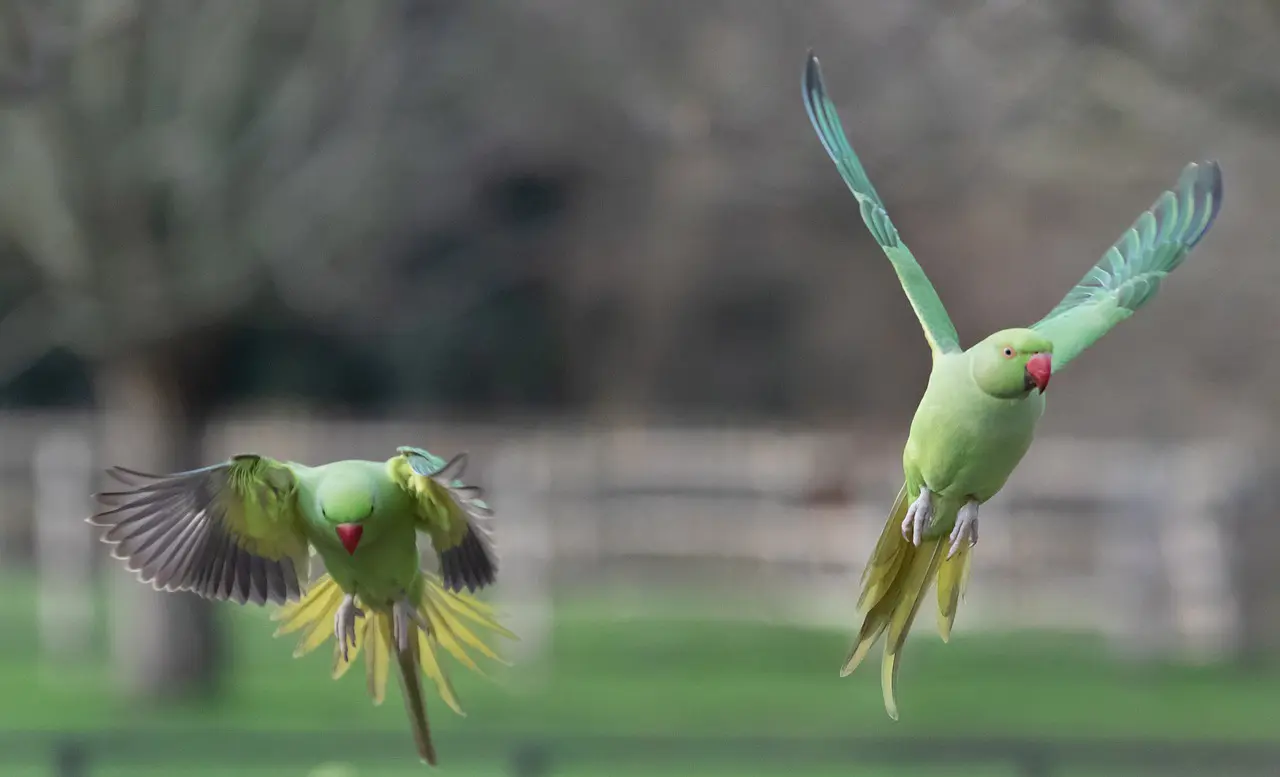
S Keen
Tuesday 13th of October 2020
Parakeets regularly feed from peanuts feeders in our garden! (Byfleet, Surrey) They originally found the hornbeam tree, at the end of our garden, which in autumn is covered in tiny seeds! From there they had obviously watched all the small birds feeding and investigated! Now after many years we see them most days. The small birds will also feed beside them. The only aggression we see is between the parakeets and magpies! Friends from other parts of UK at first didn't believe us until I posted pictures or they visited us!
Julianna Barnaby
Wednesday 14th of October 2020
That sounds delightful! I'm really glad to hear that the small birds feed between them as it's a question that has been raised a couple of times. They're such a beautiful sight aren't they - what a lovely treat for your garden!
Victoria Reader
Thursday 10th of September 2020
Love this article! I always heard they came from the filming of African Queen. I heard that after filming they set the birds free. I noticed them in my garden over the summer for the first time. We are way over the other side of east London in Upminster Bridge, Essex. I’m guessing due to covid and the lockdown some have flown further afield.
Julianna Barnaby
Thursday 10th of September 2020
Thanks! It's crazy how many stories there are about the parakeets! It's been so interesting finding out more about them. I've had a bit of a look and couldn't spot any parakeets in The African Queen but have to be honest, didn't go through it still by still so can't say 100% :) I bet they've had a field day this year, no doubt they'll become a common sight across the country - the RSPB reckon they're definitely here to stay.